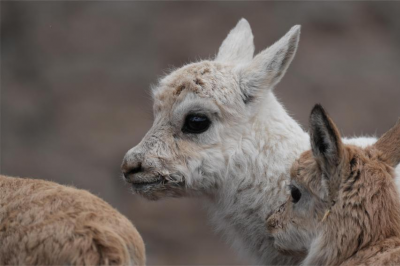| Dec. 25, 2023 -- The Xizang autonomous region announced the official establishment of a field science observation station to study biodiversity in Metog county on Wednesday, China News Service reported.
This groundbreaking initiative is a joint effort between the region's Institute of Plateau Biology, the College of Life Sciences, Zhejiang University, and the Metog county government.
Located in the southeastern part of the plateau region, Metog is nestled in the middle and lower reaches of the Yarlung Zangbo River. The county boasts a unique vertical climate zone encompassing tropical, subtropical, temperate, and frigid zones. It is renowned for its abundant wildlife and plant resources, including 42 known species of China's key protected animals, over 3,000 species of vascular plants, and more than 180 wild orchid species.
Dang Weidong, director of the station, attended Wednesday's inauguration ceremony and expressed the station's objectives and plans. "The observation station will conduct surveys and collections of characteristic biological resources, with a particular focus on establishing a conservation garden for rare and endangered medicinal organisms," Dang was quoted as saying by China News Service.
The aim is to harness the biological resources and ecological advantages of Metog county to create ecological, welfare, and scientific values, Dang said.
The station will prioritize biosecurity assessment, early warning systems, and biodiversity monitoring to provide a scientific basis for biosecurity measures. Additionally, the station will host research on the development and utilization of forest resources, ethnic botany, identification of tea plant diseases and pests, and implementation of green prevention and control technology. These efforts will provide crucial technological support for the sustainable development of the county's biological resources.
Zhao Yunpeng, deputy dean of the College of Life Sciences, Zhejiang University, emphasized the observation station's role in advancing the research on Metog's biodiversity.
He highlighted the need for an academic committee to guide future endeavors and promote an open concept. "The aim is to foster a cooperative and shared construction model that encourages collaboration among researchers and stakeholders," said Zhao.
The station's establishment marks a significant milestone in studying the county's biodiversity, Zhao said. He added that the station's tasks include creating a database, an achievement repository, germplasm gene banks, and field monitoring sites. These will contribute to a comprehensive understanding of Metog's biodiversity resources.
"Through long-term dynamic monitoring, researchers hope to gain valuable insights into the region's biodiversity and pave the way for its sustainable conservation and management."
By: Palden Nyima and Daqiong in Lhasa |
- Home
- News Tibet |Exclusive |China |World |Related News |Latest
- Documents White Papers |Others
- Photo Politics |Economy & Society |Culture & Religion |Human & Nature |Beautiful Tibet |Other Tibetan-Inhabited Area |Exchanges |Related
- Video News |Documentary |Micro-Video |Entertainment
- Art
- Tourism
- In Focus
- About Tibet






